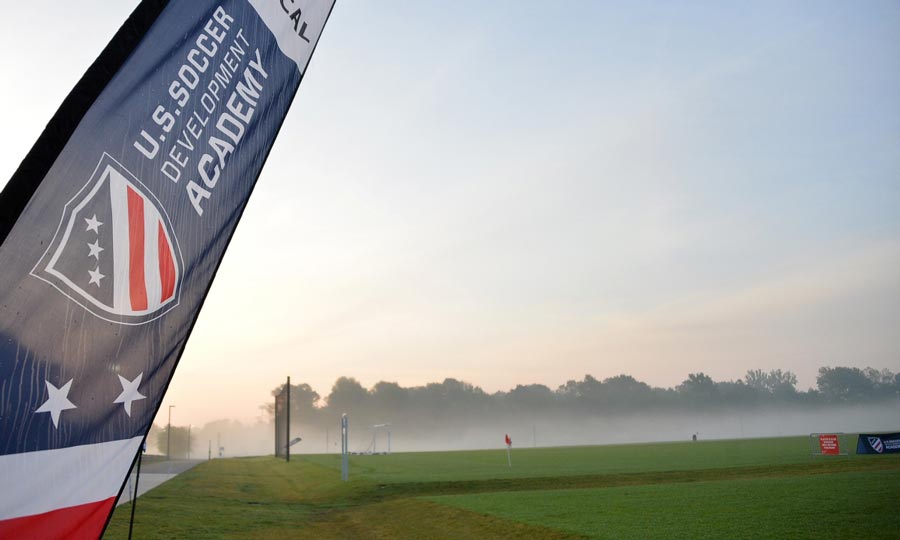As part of its mission to make soccer, in all its forms, the preeminent sport in the United States and to continue the development of soccer at all re
As part of its mission to make soccer, in all its forms, the preeminent sport in the United States and to continue the development of soccer at all recreational and competitive levels, U.S. Soccer’s Player Development Initiatives (PDIs) are now officially integrated as a part of the soccer landscape.
Following a two-year implementation window with the announcement of PDIs in August 2015, U.S. Soccer’s 60 youth member organizations, including US Club Soccer, US Youth Soccer, American Youth Soccer Organization and Soccer Association for Youth are collectively set to roll out the new standards and initiatives, which include birth year registration and small-sided game standards.
“As a U.S. Soccer National Association we are proud to partner with the Federation on the implementation of the PDIs. Benefits have been already realized by our early adopters and we’ll see more as the PDI’s align with AYSO’s Vision, Mission, and Six Philosophies where the child; the player is our priority,” Scott Synder, AYSO Player Development Specialist said.
Small-sided standards, which provide a framework for field, goal and ball sizes, number of players, game length, and offside regulations as youth players progress from age six to 12, are intended to provide a consistent approach, according to developmental needs, to an on-field game environment that allows players to have a stronger opportunity to develop heightened soccer intelligence and on-the-ball skills.
Birth year registration, which requires that a youth player’s registration process is based on his/her birth year, allows for a consistent approach in how players are recognized for competition. Along with aligning the United States with the international standard observed by the majority of FIFA member nations, this step ensures that an increased focus will be on the developmental needs of the child within the context of his or her age group. Under this categorization, U-6 players for the upcoming 2017-2018 season will fall under birth year 2012, while U-12 players will be those players born in 2006. To simplify, an age group can be determined by subtracting the birth year from the year the season ends.
Year Season Ends – Birth Year = Age Group
2017 to 2018 – 2003 = U-15
The 60 U.S. Soccer youth member organizations registering more than four million youth players in the country will observe the standards and philosophies beginning today, if they have not done so already.
Players, coaches, parents and community members are encouraged to contact their local organizations or state associations if they have any questions about PDIs.
Why are the youth soccer registration standards changing?
The change in age group registration aims to support player development, and goes hand-in-hand with the new standards for small-sided games. Using birth year registration ensures that players are training and playing in the proper age group, each with their own developmental needs.
The new standard also strives to lessen relative age effect (RAE). RAE is a selection bias towards players born earlier in the calendar year. Players born in early months are naturally older and more mature, but not necessarily better players. While the change to birth year registration won’t completely solve the problem, it will make it easier to identify and understand.
- Learn more about PDIs: PDI Presentation | Five Things About PDIs | Small-Sided Games
- U.S. Soccer Member Organizations Adopt PDIs to Support Youth Soccer Development
- U.S. Soccer Player Development Initiatives Officially Implemented
How to determine your age group
Birth year registration is determined by the year a soccer season ends. For seasons that span from fall to spring or summer overlapping across two calendar years, players will register based on their age during the second year of the season. To simplify, an age group can be determined by subtracting the birth year from the year the season ends.
Year Season Ends – Birth Year = Age Group
2017 to 2018 – 2003 = U-15
Check out the Birth Year and Season Matrix on page four of the PDIs FAQ [English | Spanish] for more information.
Short-Term Changes, Long-Term Benefits
The current iteration of some teams will change with the implementation of the birth year registration rule, but the changes will affect different clubs depending on how they organize their teams. Some clubs may use mixed age group teams such as a combined U-11/U-12 team. For younger age groups, where RAE may be more prominent, more than one team could be created for each birth year. Players also still have the option to play up in older age groups, if they need stronger competition. In the short term, team compositions may change, but in the long term this shift prioritizes individual player development over team success, the driving purpose behind PDIs.
Easier to Understand and Creates Awareness
Shifting to a birth year registration system makes it easier to understand what age group a youth player belongs in. Previously, two players born in the same year could be in different age groups. Now, every player born in the same calendar year will play in the same age group. This makes it easier for parents to figure out where their child should be playing and for both coaches and parents to become more aware of how players develop based on age and how individual needs may vary.
This change also aligns the U.S. youth soccer calendar with the rest of the world. The United States was one of only two countries that used a school year calendar to determine age group. Now, the United States joins nearly every other FIFA federation. U.S. youth players will now develop and train in the same age group environment as leading soccer nations worldwide.
